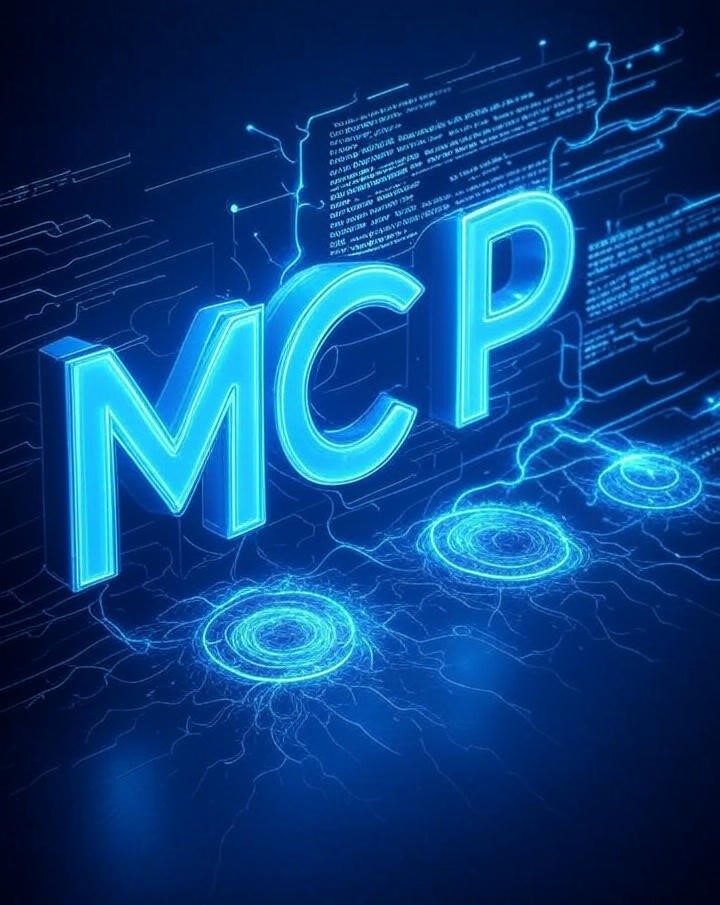As AI systems advance, they still struggle in one key area: accessing and leveraging real world context consistently. The Model Context Protocol (MCP) solves this by providing a universal connector between models and external tools and data. Here’s why MCP matters and how it transforms AI workflows.
🧩 What Is MCP?
MCP is an open‑standard protocol that defines how AI assistants communicate with data sources and services using a unified, structured interface. Think of it like a “USB‑C port for AI”: regardless of the model or tool, the connection standard stays the same
At its core is a client–server pattern:
- Client lives with the AI model.
- Server wraps around external services (e.g. databases, code repositories, file systems).
- They talk via JSON‑RPC calls, enabling seamless data retrieval and actions

1. Drastically Simplifies Integrations
Without MCP, each AI model requires bespoke connectors for each API or tool—leading to exponential complexity. MCP eliminates that by offering a single, reusable interface across systems
2. Supports Rich Two-Way Workflows
Unlike one‑shot requests, MCP allows persistent, bidirectional communication—pulling data, triggering actions, and reading responses in a continuous flow
3. Boosts Speed, Context, and Accuracy
Direct, structured access accelerates response times and enriches context—lowering risk of hallucinations and improving AI relevance
4. Pluggable and Scalable
Add new tools effortlessly: just spin up a new MCP server—no AI logic changes needed. The server announces itself, and your model auto-discovers and uses it. It’s plug‑and‑play, like microservices, enabling organic, friction‑free scalability.
🛠️ Integration Made Easy
How it works:
- Wrap external tools with a lightweight MCP server: databases, file systems, messaging platforms.
- Use an MCP client in your AI host—via standard SDKs.
- The AI model discovers servers, learns their capabilities, and interacts through documented method calls (e.g.,
list_files(),query_db()). - All communication is logged and secured with built‑in authentication and authorization
This uniform approach reduces friction when building AI-powered applications or agents—it’s less work, less risk, and more consistency.
🆚 MCP vs. Traditional APIs
| Feature | Traditional APIs | MCP |
|---|---|---|
| Integration Setup | Separate connectors per tool and model | Single MCP client + multiple servers |
| Communication Pattern | One‑shot requests or custom logic | Streaming two‑way calls, real-time context passing |
| Scalability | Heavy maintenance per integration | Plug‑and‑play servers, reusable across apps |
| Context Awareness | Must reshape responses manually | Models get structured data and metadata, better reasoning |
| Developer Experience | High friction for multi-tool orchestration | Free developers to focus on core logic, not integration |
🔍 Real-World Benefits
- Streamlined workflows
AI agents can search a document, query a database, and post results—all seamlessly integrated in a single conversation. - Rich interactions
Repeated context switching and multi-step actions become straightforward with MCP’s bidirectional design. - Future‑proof architecture
New data sources can be added without touching the core AI logic—dramatically reducing tech debt. - Enhanced reliability
Standardized protocols mean fewer edge cases and more predictable behavior.
🛡️ Security & Governance
MCP includes security safeguards:
- Registry mechanisms to prevent unauthorized tools
- Authentication & authorization at server level
- Consent prompts to control data access
🏁 Conclusion: The Path to Smarter AI
MCP is transforming AI integration by:
- Turning fragmented, fragile API connections into unified, plug‑and‑play interactions
- Enabling agents to behave more autonomously and contextually
- Allowing developers to build faster, iterate quicker, and scale securely
In a world full of AI tools and data sources, MCP is the backbone of intelligent orchestration—trusted, efficient, and standardized.
